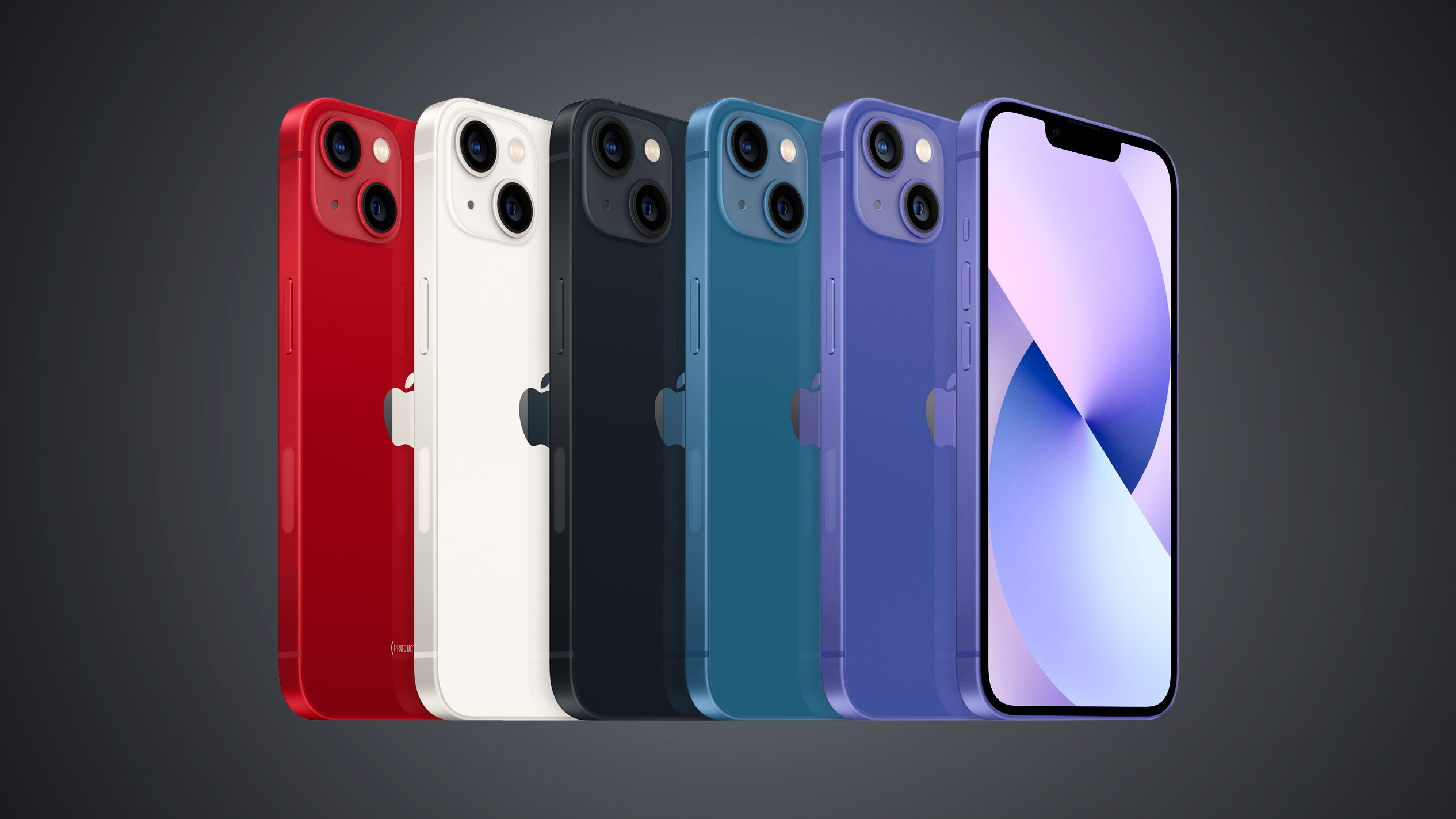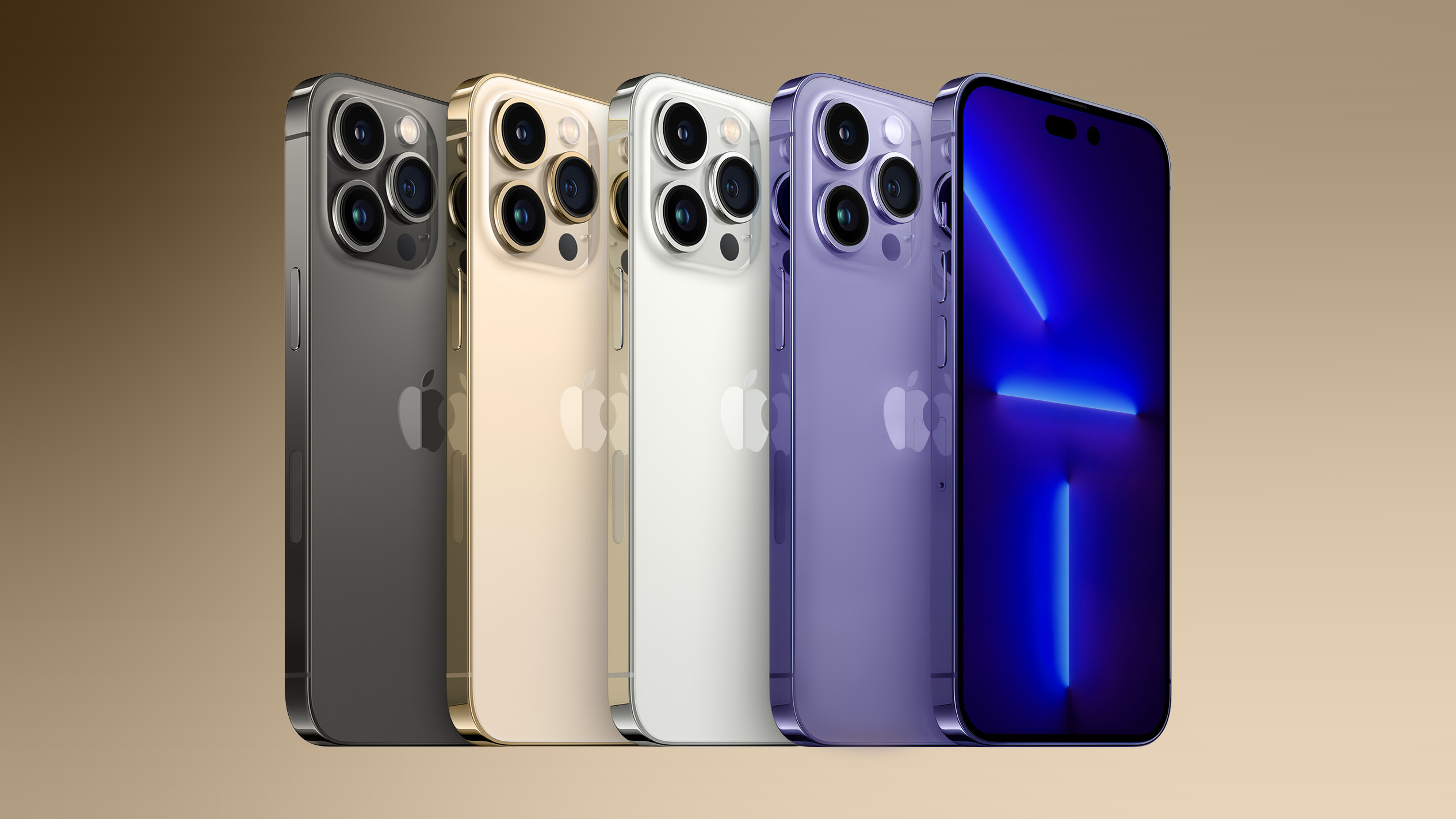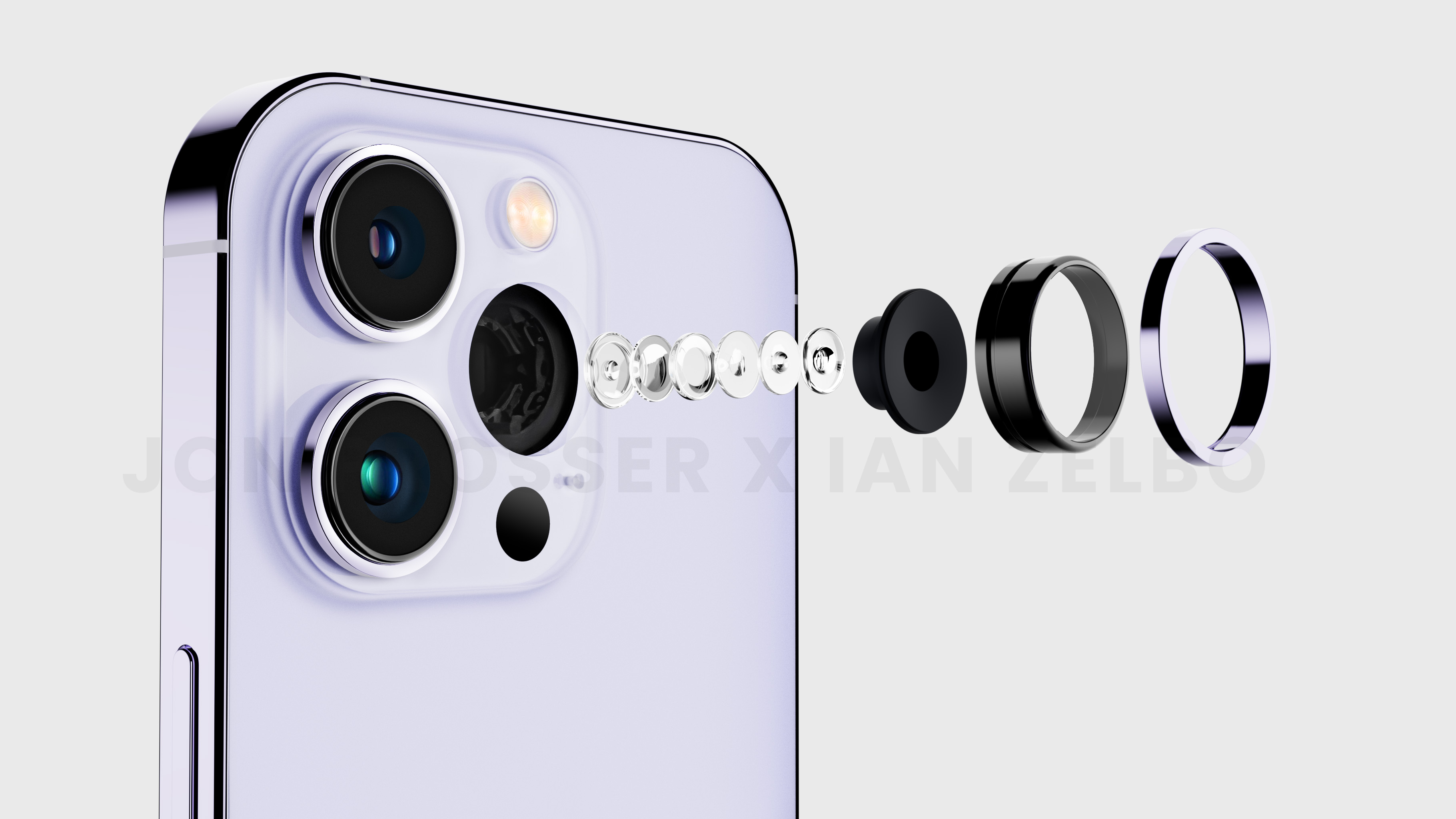How can they top the revolutionary Cinematic camera mode that lets you imitate rack focus at 30 frames per second?
Got a tip for us?
Let us know
Become a MacRumors Supporter for $50/year with no ads, ability to filter front page stories, and private forums.
Camera Upgrades for All iPhone 14 Models: Everything We Know
- Thread starter MacRumors
- Start date
- Sort by reaction score
You are using an out of date browser. It may not display this or other websites correctly.
You should upgrade or use an alternative browser.
You should upgrade or use an alternative browser.
Sounds good. I use the iPhone for video footage a lot and will be upgrading to the 14 Pro for the camera improvements alone.
to sell you the other 3 cameras as 'upgrades' in iPhone 15, 16 and 17?So why only the ultrawide with the 48 mp?
I guess my question is what type of zoom capabilities are expecting for the periscope lens?The rumor is only the 15 Pro Max will get the periscope lens with the iPhone 16 Pro getting it in 2024. Only a rumor of course…
I’m going to need a 2TB model to take a selfie at this point.
The iPhone 14 and iPhone 14 Pro models are rumored to feature several important camera upgrades. Unlike color option rumors, reports about upcoming iPhone camera technology tend to be fairly accurate, with camera component supply chains often revealing specific information well ahead of the device's release date.
In line with how Apple reserves its highest-end camera features for the "Pro" models, the iPhone 14 and iPhone 14 Max are expected to receive moderate camera improvements, with the more substantial changes being exclusive to the iPhone 14 Pro and iPhone 14 Pro Max to push iPhone photography to the limit.
iPhone 14 and iPhone 14 Max

iPhone 13 mini and iPhone 13
- 12-megapixel Wide camera with Focus Pixels
- 12-megapixel Ultra Wide camera with ƒ/2.4 aperture
- Front-facing camera with ƒ/2.2 aperture
iPhone 14 and iPhone 14 Max
- 12-megapixel Wide camera with Focus Pixels
- 12-megapixel Ultra Wide camera with ƒ/1.8 aperture and autofocus
- Front-facing camera with ƒ/1.9 aperture and autofocus
The iPhone 14's widely rumored new 48-megapixel Wide camera is expected to be exclusive to the Pro models, while the standard iPhone 14 models will retain a 12-megapixel Wide camera like the iPhone 13 lineup.
Earlier this year, Apple analyst Ming-Chi Kuo said that all four of the iPhone 14 models, including the iPhone 14, iPhone 14 Max, iPhone 14 Pro, and iPhone 14 Pro Max, will feature an upgraded front-facing camera with autofocus and a wider ƒ/1.9 aperture. The component is expected to cost Apple three times more.
A wider aperture would allow more light to pass through the lens and reach the front camera's sensor on the iPhone 14 models, resulting in enhanced image quality. Kuo said these camera upgrades could provide a better depth-of-field effect for Portrait mode photos and videos, while autofocus can improve focus during FaceTime and Zoom video calls. By comparison, the front camera on all of the iPhone 13 models has a fixed focus and a smaller ƒ/2.2 aperture.
Kuo correctly predicted that iPhone 13 Pro models would tout significantly upgraded Ultra Wide camera, increasing from ƒ/2.4 to ƒ/1.8 and from a five-element lens to a six-element lens, also gaining autofocus instead of the current fixed focus. In 2022, these upgrades to the Ultra Wide camera are expected to trickle down to the entire iPhone 14 lineup instead of being reserved for the Pro models.
iPhone 14 Pro and iPhone 14 Pro Max

iPhone 13 Pro and iPhone 13 Pro Max
- 12-megapixel Wide camera with Focus Pixels
- 6-element Telephoto lens
- 4K video recording
- Front-facing camera with ƒ/2.2 aperture
iPhone 14 Pro and iPhone 14 Pro Max
- 48-megapixel Wide camera with Focus Pixels and pixel binning
- 7-element Telephoto lens
- 8K video recording
- Front-facing camera with ƒ/1.9 aperture and autofocus
The 48-megapixel camera is the most widely rumored iPhone 14 camera feature. As a result of the increased number of megapixels, the iPhone 14 Pro's Wide camera pixels will be smaller, purportedly measuring at 1.22µm, according to a detailed rumor coming out of Asia. This is a reduction of 0.68µm compared to the iPhone 13 Pro and iPhone 13 Pro Max.
The new Wide sensor is believed to be a Sony unit, like the iPhone 13 Pro. Despite the change in pixel size, the iPhone 14 Pro will allegedly feature the same Dual Pixel Auto Focus (DPAF) system, marketed by Apple as "Focus Pixels," that the iPhone has offered since the iPhone 6 in 2014, and the same ability to record 16:9 HDR video at up to 60 fps.
The device's sensor is said to be 1/1.3-inches in width, a 21.2 percent increase over the 1/1.65-inch sensor width of the Wide camera on the iPhone 13 Pro and iPhone 13 Pro Max. This translates to an approximate sensor area increase of 57 percent compared to the iPhone 13 Pro.
This increase in sensor size requires a larger lens to capture more light, leading to a noticeably larger rear camera array. The 1/1.3-inch sensor size is the same as Samsung's 50MP GN1 sensor, which is used in the Google Pixel 6.
Overall, the information suggests that the iPhone 14 Pro will offer larger, higher-resolution images with finer details, but at the risk of poorer low-light performance and images that are more susceptible to noise.
To address this, the iPhone 14 Pro models are rumored to support both 48-megapixel and 12-megapixel output, which would likely be achieved with a process known as pixel binning. Already in use on some Android smartphones like Samsung's Galaxy S21 Ultra, pixel binning merges data from multiple smaller pixels on the camera's image sensor into one "super-pixel" for improved low-light sensitivity.
Pixel binning is beneficial because simply increasing a smartphone camera's megapixels while maintaining the same camera sensor size results in smaller pixels, which generally capture less light, leading to lower-quality low-light photos. Pixel binning would allow iPhone 14 Pro models to shoot high-resolution 48-megapixel photos in bright conditions and 12-megapixel photos in low-light conditions that are still of high quality.
The 48MP camera system is expected to be limited to the iPhone 14 Pro models and allow for 8K video recording, offering a significant upgrade over the iPhone 13 Pro's 12MP camera and 4K video recording capabilities. High-resolution 8K videos recorded with the iPhone 14 Pro are also said to be be suitable for viewing on Apple's long-rumored AR/VR headset.
Kuo has previously said that he believes that the camera quality of the iPhone 14 Pro models will "elevate mobile phone camera photography to a new level."
Article Link: Camera Upgrades for All iPhone 14 Models: Everything We Know
10X but I should add probably hybrid after 5X.I guess my question is what type of zoom capabilities are expecting for the periscope lens?
But don’t some of the Samsung have like a 100 zoom? I was expecting something in that ball park.10X but I should add probably hybrid after 5X.
The new Wide sensor is believed to be a Sony unit, like the iPhone 13 Pro. Despite the change in pixel size, the iPhone 14 Pro will allegedly feature the same Dual Pixel Auto Focus (DPAF) system, marketed by Apple as "Focus Pixels," that the iPhone has offered since the iPhone 6 in 2014, and the same ability to record 16:9 HDR video at up to 60 fps.
The device's sensor is said to be 1/1.3-inches in width, a 21.2 percent increase over the 1/1.65-inch sensor width of the Wide camera on the iPhone 13 Pro and iPhone 13 Pro Max. This translates to an approximate sensor area increase of 57 percent compared to the iPhone 13 Pro.
This increase in sensor size requires a larger lens to capture more light, leading to a noticeably larger rear camera array. The 1/1.3-inch sensor size is the same as Samsung's 50MP GN1 sensor, which is used in the Google Pixel 6.
Too late and still behind Xiaomi's 1-inch Sony camera sensor with Leica lens.
Xiaomi one-inch camera sensor

Last edited:
Can you please elaborate a bit more what would be good? I've noticed that when I shoot videos on 24p I get choppy videos especially when the object is in the foreground. Even when I use gimbal and I do slow movement videos I get it quite choppy and yet all the movies are in 24p and they don't suffer this problem. I thought I'm doing something wrong but your post made me think that maybe it could be something else.
Do you mind clarifying, please?
Do you mind clarifying, please?
All these nice phone camera advancements and yet we still cannot control aperture or exposure without adjusting the shutter speed in bright light. Its fine for photos but not for video.
The most basic of exposure tools is still missing leaving us without smooth motion in our outdoor videos. This will forever separate cell phone video from professional camera video until this is solved.
Maybe for those shooting 60p its not as big of a deal but it is for those of us shooting 24p. If Apple wants to really be taken seriously as a film makers camera they need to come up with a solution. External manual variable ND filters are not a great solution for everyone either.
Expecting solid improvements for the Pro Max. But looks like no periscope lens this year!
Most upgrades aren't all that significant when coming from the previous generation. I'll be bumping up from an 11Pro so I think this will be a worthwhile improvement to an already good camera.
Last year the 128GB Pro couldn’t record ProRes video. I suspect this year the low-end Pro storage option won’t support recording 8K video. Or at least not 8K ProRes, which would be about 24GB/min.
Personally I don’t care. I don’t suspect I’ll be recording 8K video anytime this decade. 4K is plenty for archival quality video. I do, however, hope we can use the sensor in good light to truly downscale 8K to 4K, which simply results in sharper 4K details and lower noise.
Personally I don’t care. I don’t suspect I’ll be recording 8K video anytime this decade. 4K is plenty for archival quality video. I do, however, hope we can use the sensor in good light to truly downscale 8K to 4K, which simply results in sharper 4K details and lower noise.
Sounds like a great upgrade. Hopefully we see the periscope lens next year.
Apple would never do 100x zoom. Quality after 30x isn’t that good.But don’t some of the Samsung have like a 100 zoom? I was expecting something in that ball park.
Rumours are optical of 5/6xI guess my question is what type of zoom capabilities are expecting for the periscope lens?
I imagine digital will be anything from 20-30x
One thing people don’t seem to be considering in the relentless pursuit of megapixels is sending them. What’s it going to be like to try and message them? Assuming they’ll be down-res’d for messaging, what if you want to send an original quality? Clog their email with 50MP photos and 8k video clips? Fill their Dropbox or iCloud storage? How long will sending them take if you’re on the go? Will they send at all for those of us often in 1-2 bar territory? Shoving mexapixels into a smartphone isnt the same as having a UHR archive on your desktop library from your SLR camera.
You’re not the only one. I’m happy to stick with lightning ports.I’m probably the only person on MacRumors who couldn’t care less if the iPhone gets USB C or not. 😉
By the way, do usb-c ports allow music through the port like a lightning port does? Could you use usb-c headphones or plug in a cable that runs to a speaker?
Everyone does. But the physics of making good cameras requires physical space. And that means a bump. There's hope that the periscope cameras may eliminate bumps.I want an iPhone with no camera bump.
Not everyone wants or cares about annual camera improvements, I wish we had a configuration choice at purchase time.the physics of making good cameras
Perhaps the iPhone could be "thicker" so the camera bump is level. All that extra volume could be used to make a bigger battery and a larger SSD space for the ever increasing image sizes. Might need an 8TB SSD if the cameras make really huge images. And then a 10GBit ethernet port for faster data transfer speeds or a Thunderbolt 4 port capable of 40Gbit speeds.
Suddenly it will appear that we have rediscovered the square Kodak "Brownie" camera format....
Suddenly it will appear that we have rediscovered the square Kodak "Brownie" camera format....
Register on MacRumors! This sidebar will go away, and you'll see fewer ads.



